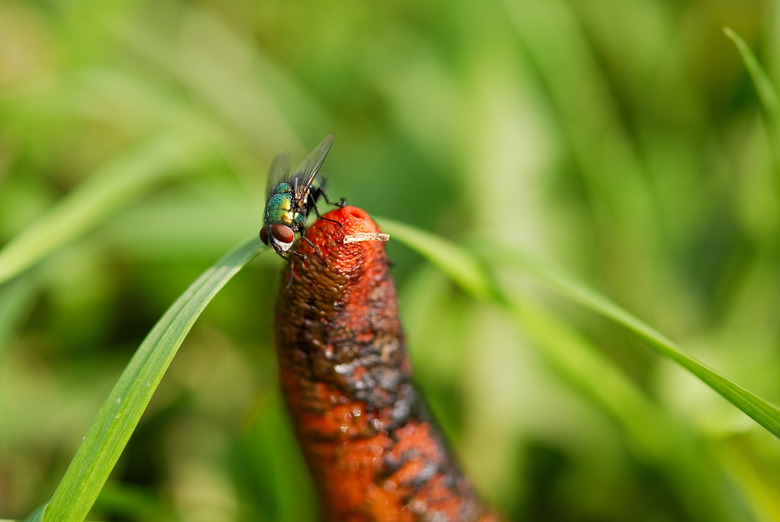The Red Spear-Tip Fungus Mushroom Found In Mulch
Many a gardener has been confused, amused or offended by the red spear-like fungus that commonly appears in mulch. The elegant stinkhorn (Mutinus elegans) is also known by the name "devil's dipstick" and belongs to the family Phallaceae. Legend claims that Charles Darwin's daughter Effy was so offended by the appearance of the mushroom that she would wander their lands gathering them in a basket. She would burn them all in order to protect the "morals of the maids" in their employ.
Cousin or Twin?
The dog stinkhorn (Mutinus caninus) might also be found growing in your mulch. It is likely that this similar mushroom may in fact be the same exact species as the elegant stinkhorn. Mushroom scientists have yet to agree if they are the same species, but many use the terms "elegant" and "dog" mushrooms interchangeably.
- Many a gardener has been confused, amused or offended by the red spear-like fungus that commonly appears in mulch.
- Mushroom scientists have yet to agree if they are the same species, but many use the terms "elegant" and "dog" mushrooms interchangeably.
What is That Smell?
There is more to be offended by with the stinkhorn than its shape. At full maturity, a slimy brown spore coating appears near the tip of the horn. This coating has an extremely foul carrion-like odor. Although extremely unpleasant for the home gardener who doesn't like the smell of dead creatures in their garden, this smelly tip has a purpose. The scent draws in flies and others who feed on carrion. The flies pick up the spores and dispense them wherever they land next, completing the stinkhorn's life cycle in unique fashion.
Growing Up
After a fly deposits the mycelium, or fungal cells, they penetrate soil or mulch and begin to digest organic material. The stinkhorn develops above ground after it is ready to reproduce, usually between July and September. Old wood, dead leaves and rich soil are particularly likely to promote growth. The fungus first appears as white string-like root systems running over the ground. These strings are the actual fungus. The buttons and horns that appear later are the fruiting bodies, or flowers, of the fungus.
- There is more to be offended by with the stinkhorn than its shape.
- The buttons and horns that appear later are the fruiting bodies, or flowers, of the fungus.
Stinky But Useful
Stinkhorns can look and smell unappealing but are actually helpful in breaking down mulch into the useful organic materials that enrich soil. The fruiting bodies only last a few days, so they are not something you must live with long. For most, their ecological benefits outweigh the temporary annoyance. They are not poisonous and create no danger for your pets or family.
